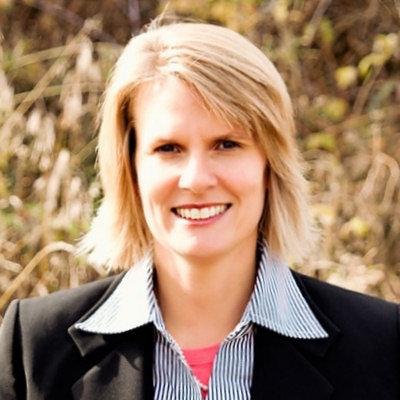
If you are not used to creating a communication loop with others, or if you have no idea what a communication loop is, you are probably missing out on stronger relationships with those around you. At work and home, these communication loops are necessary to help build trust with your team and your patients.
 Lisa Knowles, DDS.
Lisa Knowles, DDS.What is a communication loop? It is a conversation circle with someone. It could be a 10-minute conversation, or it could consist of an entire workday together filled with multiple conversations.
Think of whatever time frame you have as if it were like moving around a clock face for one hour. The conversation starts at 12:00 with idle chitchat. At 12:15, it is time for the other person to speak. At 12:30, the same switch occurs to help remind us to allow others time to speak in a conversation. By 12:45, we start to think about closing the conversation.
Both people allow each other to speak and give closing remarks -- either final thoughts on a topic or final words for the day, such as "goodbye," or "good night."
I see this loop often violated by chatty people. I don't want to pick on the extroverts too much because I am one, too, but extroverts have to learn to pause and intentionally let others talk. The perfect dental assistant or hygienist will talk patients through difficult situations and comfort them, but this gift when overused can also end up creating an unending, one-way conversation line rather than a loop. The patient leaves exhausted and talked at rather than engaged with and intellectually aroused by a back-and-forth dialogue.
Nonverbal communication
Sometimes people give us nonverbal communication indicators when they are ready to switch turns to speak. They will step back or break eye contact. They will shift ever so slightly or fidget with their hair or shirt. These subtle nonverbal cues indicate the person may be bored, may be tired, or may be ready to speak. Whatever it is, honor these nonverbal cues, and, at the very least, offer to let the person talk or take over the discussion. They may not have anything to say, but they are ready to change something in the conversation. If so, let it happen. We have to recognize these desires and close our mouths.
“Patients often give us a lot of information to help us understand their personal needs and wants.”
As professionals, though, we tend to think our words are more important than others. We think we know more than our patients. And, this is true regarding certain topics but not in every instance. Patients often give us a lot of information to help us understand their personal needs and wants. They may not know how to solve their problems technically or clinically, but they are often a valuable resource as we initially make our diagnoses.
Additionally, by listening and allowing a back-and-forth conversation to occur, we give our patients more faith in us. They trust us more because we do not assume we know everything about everyone. By first understanding the human element in personal conversations, and establishing a foundation for two-way trust, we can build on that foundation for long-term patient relationships.
To further help, think about always closing a communication loop if opened. If you or someone opens it, give it time to go back and forth, and make sure it is closed to both people's satisfaction.
What happens in a relationship when someone gets angry and storms out of the room or out of the house? There is unsettled business left to attend to and revisit. In our offices, we don't always have an opportunity to revisit patients, and, moreover, we typically don't have time to track down patients. We want to get it right the first time.
When I was first married, my husband did not always say goodnight at the end of the day. He would get tired and go off to bed without saying anything. It bothered me because I would not know he left the area, and I would yell for him or think he was still downstairs, but he had already gone to bed. The communication loop was left wide open. I felt annoyed and frustrated that I didn't get to say goodnight or say ... anything.
We talked about it, and he did not realize he left the communication loop open. His dad did the same thing, yet my family always said goodnight at the end of the day and closed the loop. Our family communication patterns were very different. It was then that I realized how these learned behaviors have a big impact on our home and work environments. We all learned differently and, therefore, have different expectations that we bring with us to work.
Talking about these expectations is essential to great group dynamics. If a doctor walks out of the treatment operatory before saying goodbye to a patient, most patients are little offended. They never reached 12:00 completion. They are looking for that summary -- that closure -- that reassurance that figuratively took place at 12:15, 12:30, and 12:45. They want to close the loop and then move on to the next step or next conversation. It's almost like using best communication manners in those situations. If you open a conversation, you help close it.
Communication is hard overall to get just right, and it's never perfect. But, with the use of a communication loop guideline, conversations will be more satisfying for all involved, and our patients will build a better bond with us.
Lisa Knowles, DDS, practices at Haslett East Lansing Dental Health & Wellness in East Lansing, MI, and is the founder and CEO of IntentionalDental Consulting. For more information, contact her at [email protected], or visit her website at Beyond32Teeth.com.
The comments and observations expressed herein do not necessarily reflect the opinions of DrBicuspid.com, nor should they be construed as an endorsement or admonishment of any particular idea, vendor, or organization.



















